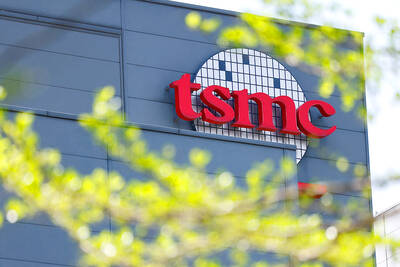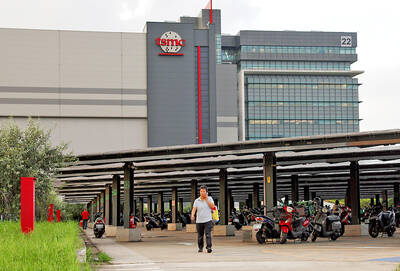US stock markets looked set for a rough ride next week after Friday’s disappointing jobs report underpinned fears that the economy’s already tepid growth is slowing.
The much-awaited labor data for last month showed dull job generation for the third consecutive month — at 80,000 jobs, far below what is needed to reduce the 8.2 percent unemployment rate.
Stocks fell sharply as the weak hiring raised alarms the struggling three-year-old recovery from deep recession is petering out under pressure from Europe’s debt crisis.
Adding to the uncertainty for employers was the November presidential election and the automatic spending cuts and tax hikes that kick in at the end of year, analysts said.
“Continuing concern over slow growth in the global economy was the likely culprit for the weak jobs number in June,” Paul Ausick at 24/7WallSt.com said. “The worse news is that those concerns are only likely to get worse in the second half of the year as the US approaches both the presidential election and the fiscal cliff looming at the end of the year.”
The markets pared heavy losses in late trade, wrapping up a week shortened by Wednesday’s public holiday.
The Dow Jones Industrial Average finished at 12,772.47 points, down 0.84 percent from a week ago.
The S&P 500 index, a broad measure of the markets, fell 0.55 percent over the week to 1,354.68.
The tech-rich NASDAQ closed the week in positive territory, with a small gain of 0.08 percent at 2,937.33.
A warning on slowing global growth from IMF Managing Director Christine Lagarde also hit sentiment on Friday. Lagarde said the IMF would cut its growth forecast in its global outlook to be released later this month.
The week’s economic calendar got off to a gloomy start after the Institute for Supply Management (ISM) reported US manufacturing fell for the first time in three years last month.
Later in the week, the ISM reported growth in the massive services sector slowed last month.
Tomorrow brings the unofficial beginning of second-quarter earnings season, with aluminum giant Alcoa reporting results after the markets close.
The economic calendar will lighten up. International trade will be in focus on Wednesday, as well as the minutes of the US Federal Reserve’s last meeting of its policy-setting Federal Open Market Committee (FOMC).
“The May trade data will help set expectations for Q2 growth, while the minutes of the June FOMC meeting will likely garner the most attention,” Nomura analysts said.

TECH TITAN: Pandemic-era demand for semiconductors turbocharged the nation’s GDP per capita to surpass South Korea’s, but it still remains half that of Singapore Taiwan is set to surpass South Korea this year in terms of wealth for the first time in more than two decades, marking a shift in Asia’s economic ranks made possible by the ascent of Taiwan Semiconductor Manufacturing Co (TSMC, 台積電). According to the latest forecasts released on Thursday by the central bank, Taiwan’s GDP is expected to expand 4.55 percent this year, a further upward revision from the 4.45 percent estimate made by the statistics bureau last month. The growth trajectory puts Taiwan on track to exceed South Korea’s GDP per capita — a key measure of living standards — a

Samsung Electronics Co shares jumped 4.47 percent yesterday after reports it has won approval from Nvidia Corp for the use of advanced high-bandwidth memory (HBM) chips, which marks a breakthrough for the South Korean technology leader. The stock closed at 83,500 won in Seoul, the highest since July 31 last year. Yesterday’s gain comes after local media, including the Korea Economic Daily, reported that Samsung’s 12-layer HBM3E product recently passed Nvidia’s qualification tests. That clears the components for use in the artificial intelligence (AI) accelerators essential to the training of AI models from ChatGPT to DeepSeek (深度求索), and finally allows Samsung

READY TO HELP: Should TSMC require assistance, the government would fully cooperate in helping to speed up the establishment of the Chiayi plant, an official said Taiwan Semiconductor Manufacturing Co (TSMC, 台積電) yesterday said its investment plans in Taiwan are “unchanged” amid speculation that the chipmaker might have suspended construction work on its second chip packaging plant in Chiayi County and plans to move equipment arranged for the plant to the US. The Chinese-language Economic Daily News reported earlier yesterday that TSMC had halted the construction of the chip packaging plant, which was scheduled to be completed next year and begin mass production in 2028. TSMC did not directly address whether construction of the plant had halted, but said its investment plans in Taiwan remain “unchanged.” The chipmaker started

MORTGAGE WORRIES: About 34% of respondents to a survey said they would approach multiple lenders to pay for a home, while 29.2% said they would ask family for help New housing projects in Taiwan’s six special municipalities, as well as Hsinchu city and county, are projected to total NT$710.65 billion (US$23.61 billion) in the upcoming fall sales season, a record 30 percent decrease from a year earlier, as tighter mortgage rules prompt developers to pull back, property listing platform 591.com (591新建案) said yesterday. The number of projects has also fallen to 312, a more than 20 percent decrease year-on-year, underscoring weakening sentiment and momentum amid lingering policy and financing headwinds. New Taipei City and Taoyuan bucked the downturn in project value, while Taipei, Hsinchu city and county, Taichung, Tainan and Kaohsiung